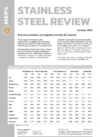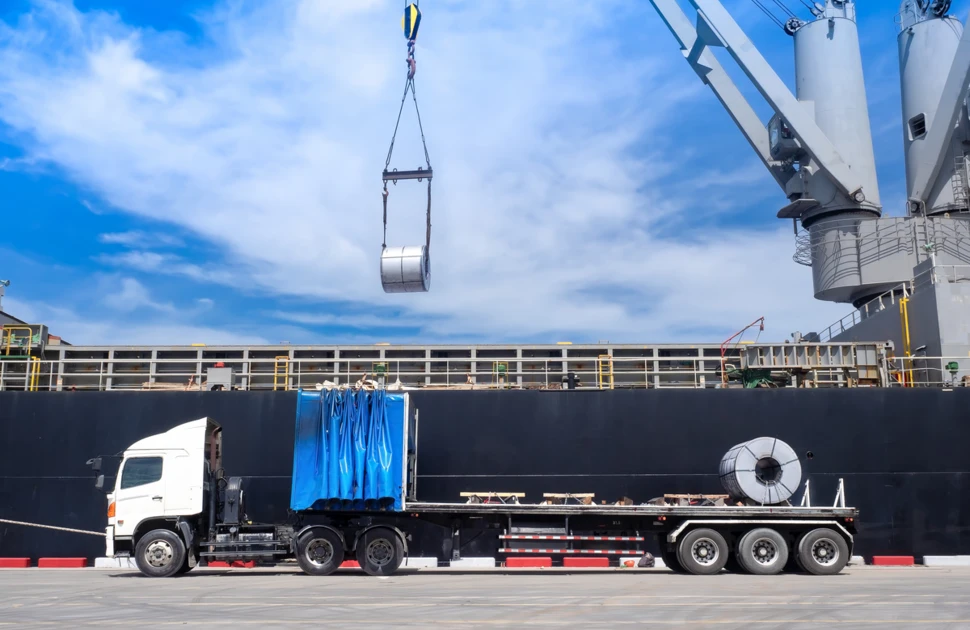US stainless steel prices rise as ATI seeks Section 232 exemption
US stainless steel producers raised their March alloy surcharges for austenitic stainless steels. The North American Stainless 304 flat product surcharge increased to US$1.3067 per pound – an eleven-year high. This represents an increase of more than 45 percent, compared with the figure recorded in March 2021. A similar picture is being witnessed for molybdenum-bearing grades. The 316 surcharge climbed by 7.3 percent, month-on-month, to US$1.8613 per pound.
US steelmaker, North American Stainless, recently announced a selection of basis price increases, effective March 1. On this occasion, the reduction in the discount to list prices, for the 300 series, was limited only to cold rolled grade 301. Nevertheless, the MEPS North American 304 and 316 basis prices are at their highest level since June 2007.
Many buyers complain that they are unable to purchase domestically produced cold rolled coil and sheet direct from the US mills. Some suggest that the announcement by Allegheny Technologies (ATI), early in 2020, that it would exit the commodity grade stainless flat rolled products sector, due to low profitability, has exacerbated the situation. Very strong order books have enabled US producers to prioritise supply of the most profitable grades and sizes. Furthermore, the mills still have customers on allocation, limiting the number receiving material.
In recent months, Allegheny & Tsingshan Stainless (A&T), the ATI joint venture with China’s Tsingshan, filed its third attempt for a Section 232 exclusion. The application relates to the import of hotband with low residuals, from Indonesia. This feedstock is required for its cold rolling facility in Midland, Pennsylvania. Previous attempts by A&T to acquire tariff-free Indonesian slab, for conversion, were rejected by the authorities.
Outokumpu Stainless USA, North American Stainless and Cleveland-Cliffs Steel, all submitted objections to the new request. These were mainly on the basis that this specification of hotband can be produced and supplied locally. Several market participants suggest it is unlikely that the exclusion will be granted, despite the current difficulties in procuring domestic cold rolled coil and sheet.
Whilst the majority of stockholders continue to report that the availability of cold rolled material remains tight, several note a gradual easing. In its objection to A&T’s exclusion request, Outokumpu states,
A recent review of MSCI distributor stock shows a 114-day supply of hot rolled stainless steel flat products and an 88-day supply of cold-rolled stainless flat products – above the historical 80-90 day stock level, and certainly not a critical shortage. Supply is available to domestic stainless steel flat product users, at fair market prices.
Those buyers who are unable to secure tonnages from domestic steel producers may question this. Furthermore, many believe that any improvements in material availability have been the result of increased import volumes, rather than an upturn in domestic output. Cold rolled availability is likely to remain restricted, in the near term, as consumption continues to outstrip supply, for certain grades and sizes.
Stainless steel demand, in the first few months of this year, has remained at a healthy level. Infrastructure spending should boost consumption in the medium-to-long term. However, the economic recovery, post Covid, is expected to slow, in 2022, amid rising inflation levels and growing geopolitical tensions. Due the ongoing military action by Russia, in Ukraine, volatility is expected to be a key feature of the global stainless steel markets in the weeks and months ahead.

Source:
Stainless Steel Review
The MEPS Stainless Steel Review is an invaluable monthly guide to international stainless steel prices and includes the latest global stainless steel industry analysis.
Go to productRequest a free publication





